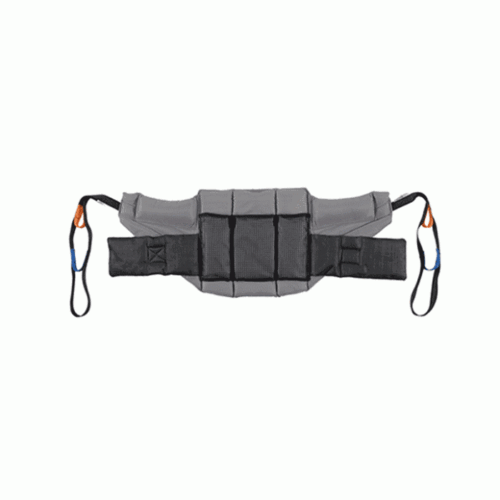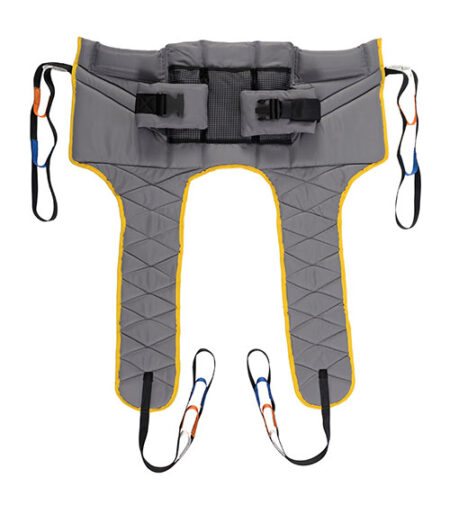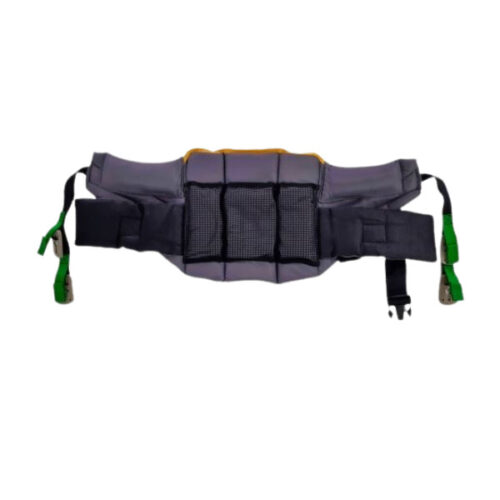Standing Support Slings from Medaco
A standing support sling is a comfortable, supportive, and wearable harness that is fastened around the torso of a patient and incorporates straps or similar methods to attach the sling to a support bar, a support frame, or a patient hoist. It might be used for example, when it is necessary to assist a patient to rise from a sitting to a standing position.
Normally padded for comfort and stability, the stand aid sling can be easily adjusted for the best and most appropriate fit. It can help in situations where service users have limited mobility but can bear some of their own weight, or where a patient needs extra support for raising and twisting in the early stages of rehabilitation, after an injury or operation.
Standing slings for hoists
When caring for patients with limited mobility, a hoist is a mechanical device that takes the strain out of moving them from one position to another.
A portable standing hoist suitable for the attachment of a standing lift sling acts as a transfer aid by providing mechanical assistance for raising a service user from the sitting to the standing position.
When combined with a standing support sling, a standing hoist not only provides comfortable and stable mechanical rising assistance, it will also boost the confidence of the user by providing the necessary support for them to get used to being in a standing position again.
Take a look at our Resources Page for an informative video on 6 hoist safety checks to carry out before use.
Main considerations before using a stand aid sling
- Do the circumstances require a single-use sling for infection control?
- Make sure the sling is appropriate for the level and the location of the support needed
- Make a visual safety check of the condition of loops and harnesses at their connection points
When to use standing slings
There are two primary reasons why a standing lift sling forms an important part of any care environment dealing with people with limited mobility.
- From the point of view of the service user, it means that a sling can be used to help patients who are immobile into positions for toileting and bathing, or washing and allows them to retain some personal dignity
- From the carer’s point of view, it reduces the chance of patient handling becoming hazardous by lessening the amount of physical effort needed to move a patient. This is particularly relevant when performing a sit-to-stand manoeuvre. The risk of strain injuries to carers is an ongoing concern in care homes that makes any focus on assisted lifting and handling increasingly important.
For more advice and any questions
If you would like more advice on anything you have read here about standing slings or any other aspect of our service, our support page is the first place to head.



